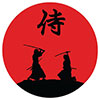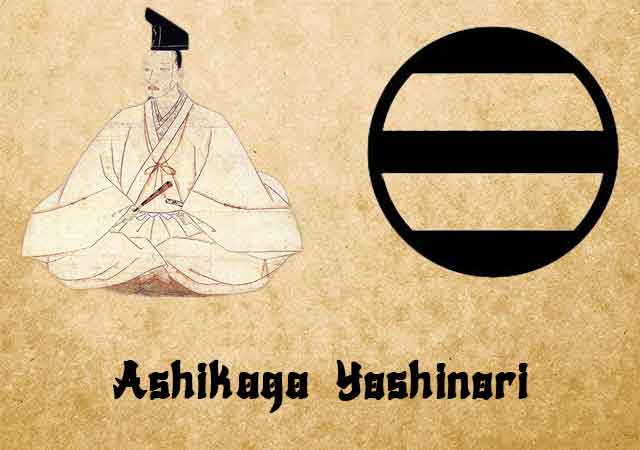
Ashikaga Yoshinori (July 12, 1394 – July 12, 1441) assumed the role of the sixth shogun of the Ashikaga shogunate, governing from 1429 to 1441 during Japan's Muromachi period. Born as the son of the third shogun, Ashikaga Yoshimitsu, he was known as Harutora in his youth.
Following the passing of the fifth shogun, Ashikaga Yoshikazu, in 1425, the fourth shogun, Ashikaga Yoshimochi, resumed leadership of the shogunate. Yoshimochi, having no other sons and having not designated a successor before his own demise in 1428, left the future of the shogunate uncertain.
Upon Yoshimochi's passing, Yoshinori, who had embraced monastic life at the age of ten, assumed the role of Sei-i Taishogun. His appointment was orchestrated by the shogunal deputy, Hatakeyama Mitsuie, who, within the sanctum of Iwashimizu Hachiman Shrine in Kyoto, selected Yoshinori from a pool of potential Ashikaga successors. It was believed that the influence of Hachiman played a role in this auspicious decision.
Yoshinori officially took the mantle of shogun in 1429, a year prior to the Southern Court's surrender. However, his reign was marked by several uprisings, including the Otomo rebellion and the insurrection of rebel monks on Mount Hiei in 1433. Additionally, the Eikyo Rebellion, led by Kanto kubo Ashikaga Mochiuji, transpired in 1438. In the same year, Yoshinori consolidated the authority of the shogunate by quelling Ashikaga Mochiuji, who took his own life the following year due to growing dissatisfaction with Yoshinori's rule.
During this era, there was heightened contact with China, and Zen Buddhism gained influence, resulting in broad cultural ramifications. For instance, the main hall (Hon-do) at Ikkyu-ji stands today as the oldest extant Tang-style temple in the Yamashiro and Yamato provinces, constructed in 1434 and dedicated by Yoshinori.
Several significant events occurred during Yoshinori's reign: the establishment of the Tosen bugyo in 1434 to oversee foreign affairs; the destruction of the Yasaka Pagoda at Hokanji in Kyoto by fire in 1436, followed by its reconstruction four years later under Yoshinori's patronage; and in 1441, Yoshinori granted the Shimazu clan suzerainty over the Ryūkyū Islands.
In 1432, trade and diplomatic relations between Japan and China were reinstated, a connection that had been severed during Yoshimochi's rule. The Chinese emperor reached out to Japan by sending a missive to the shogunate via the Ryūkyū Islands, to which Yoshinori responded favorably.
Yoshinori's reign also witnessed the establishment of the Tosen-bugyo system in 1434 to mediate overseas trade. This body's functions encompassed safeguarding trading ships in Japanese waters, procuring export goods, mediating between the Muromachi shogunate and shipping interests, and maintaining record-keeping. Notably, the Muromachi shogunate was the first to appoint members of the samurai class to high-ranking positions in its diplomatic bureaucracy.
Yoshinori's rule, however, was marred by his oppressive measures and unpredictable autocratic tendencies. In 1441, he met his demise at the hands of Akamatsu Noriyasu, the son of Akamatsu Mitsusuke, who had invited Yoshinori to a Noh performance at their residence and assassinated him during the evening play. Yoshinori was 48 years old at the time of his assassination. Mitsusuke orchestrated the plot after learning of Yoshinori's intention to bestow three provinces, belonging to Mitsusuke, upon his cousin Akamatsu Sadamura. This decision was influenced by the fact that Sadamura's younger sister had become Yoshinori's concubine and had borne him a son.
In the aftermath, it was decided that Yoshinori's 8-year-old son, Yoshikatsu, would succeed as the new shogun. Mitsusuke had already clashed with the fifth Shogun Ashikaga Yoshimochi in 1427, leading to Mitsusuke's relocation to Harima province and the burning of his residence in Kyoto. This act further escalated tensions with Yoshimochi, resulting in a deadly pursuit.
While the Ashikaga line persisted through this seventh shogun, the authority of the shoguns gradually waned, leading to the eventual decline of the shogunate. The events surrounding Yoshinori's assassination and betrayal represented a departure from the previous code of military loyalty.
See also
-
Hattori Hanzo
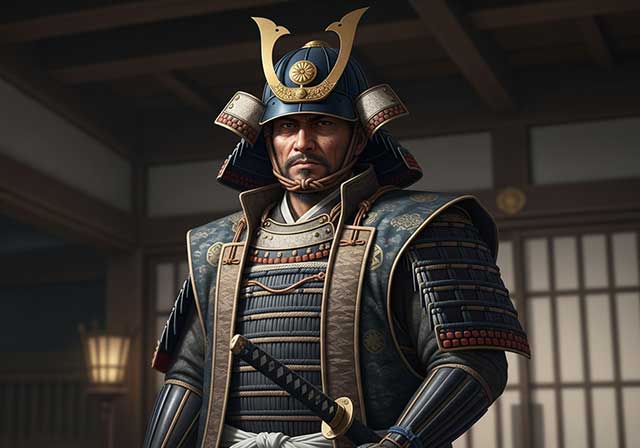
Hattori Hanzō, also known by the name Hattori Masanari, was the third son of Hattori Yasunaga, a samurai who served the Matsudaira clan. In his childhood he was called Tigachi Hanzō. His father held the highest rank in the shinobi hierarchy, that of jōnin, and Hanzō followed in his father’s footsteps, choosing the same path.
-
Hatano Hideharu
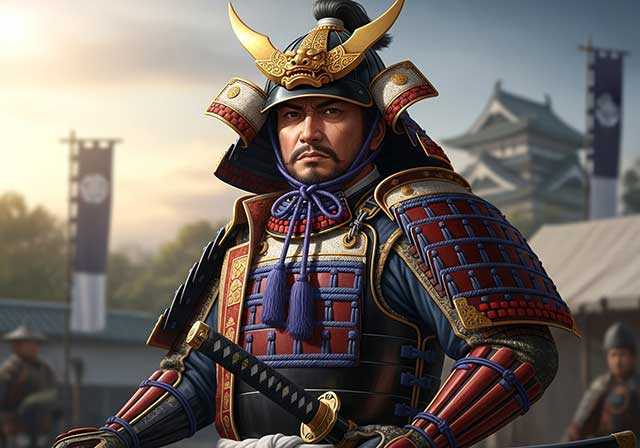
Hatano Hideharu was the eldest son of Hatano Harumichi, the head of the Hatano clan. However, in childhood he was adopted by his uncle, Hatano Motohide, and was therefore formally regarded as Motohide’s heir. From the time of Hideharu’s grandfather, Hatano Tanemichi, the Hatano clan had been a vassal of the powerful Miyoshi house, which exerted considerable influence over the Ashikaga shoguns and effectively shaped the political situation in the region. Early in his career, Hideharu served Miyoshi Nagayoshi and, judging by surviving records, held a fairly high position within his lord’s hierarchy, as he was among the select group invited to the enthronement ceremony of Emperor Ōgimachi in 1557.
-
Fukushima Masanori
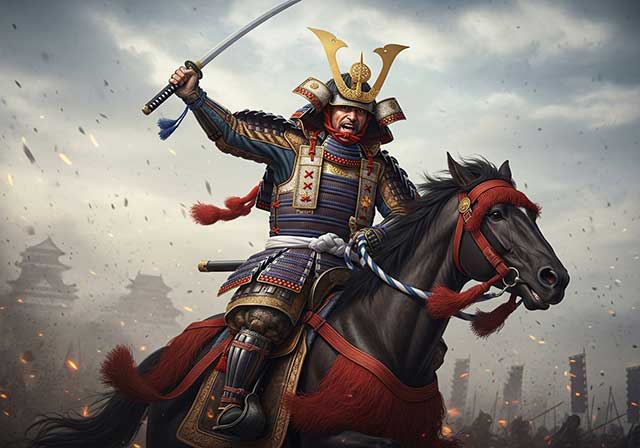
Fukushima Masanori, a samurai from Owari Province, served Toyotomi Hideyoshi and took part in the Battle of Shizugatake, where he distinguished himself so conspicuously that he was awarded the honorary title of one of the “Seven Spears of Shizugatake,” meaning the warriors who had shown the greatest valor in the battle. As a reward for his courage and martial prowess, he was granted land producing an income of 5,000 koku of rice.
-
Uemura Masakatsu
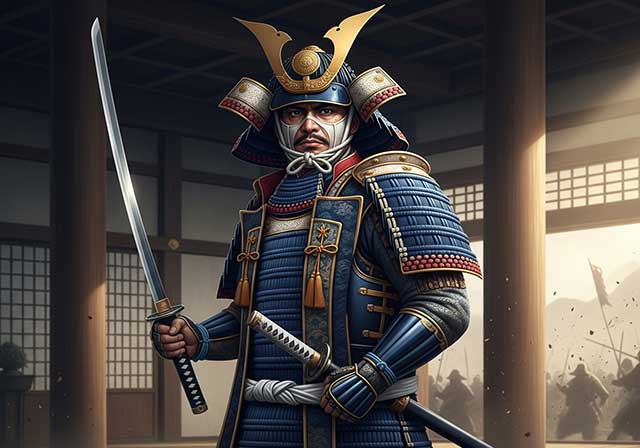
Masakatsu was a member of the Uemura clan and the son of Uemura Masatada; from an early age he served Tokugawa Ieyasu. During the Ikkō-ikki uprising in Mikawa Province in 1563, having converted from the Jōdo Shinshū Buddhist sect to the Jōdoshū sect, he took part in suppressing the rebels. After these events, Masakatsu was appointed a military governor and was granted land holdings. According to a number of sources, he was one of the so-called “Three Governors of Mikawa” (Mikawa sanbugyō), together with Amano Yasukage (1537–1613) and Koriki Kiyonaga (1530–1608).
-
Tomoe Gozen

Gozen is regarded as one of the few historically documented examples of true female warriors of feudal Japan, known as onna-musha or onna-bugeisha. Although Japanese history records countless women who at various times were forced to take up arms—for example, in defense of their castles—Tomoe Gozen was, without any doubt, a genuinely skilled and accomplished fighter. She was the wife of Kiso (Minamoto) Yoshinaka, although The Tale of the Heike describes her more as a female vassal. Yoshinaka rose in rebellion against the Taira clan and, in 1184, captured Kyoto after his victory at the Battle of Kurikawa. After the Taira were driven into the western provinces, Yoshinaka began insistently asserting that he alone was worthy of assuming leadership of the Minamoto clan and taking on the mantle of its head.
-
Tachibana Muneshige

Tachibana Muneshige was born the eldest son of Takahashi Shigetane, one of the principal retainers of the Ōtomo clan and commander of Iwaya Castle. In childhood, he bore the name Senkumamaru. His early years coincided with a period of intense military confrontation between the Ōtomo clan and other powerful warrior houses of Kyūshū—namely the Shimazu, Akizuki, and Ryūzōji clans.
-
Tachibana Dosetsu
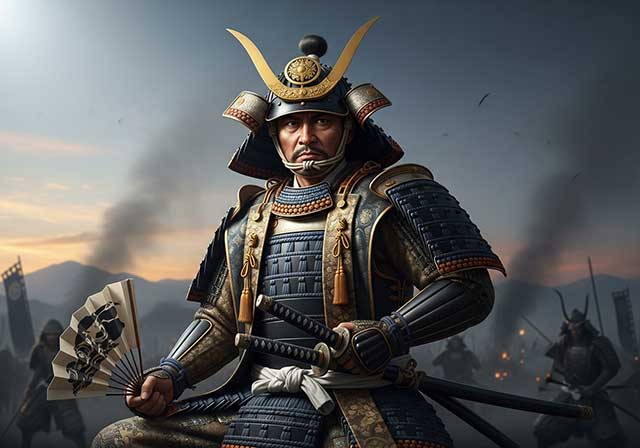
Tachibana Dōsetsu is the name by which Hetsugi Akitsura is more widely known; the name of this lineage is also found read as Hekki or Bekki. For a long period, Akitsura served the Ōtomo clan, the daimyō of Bungo Province, and took part in wars against the Ōuchi family, the principal enemies of the Ōtomo in northwestern Kyushu. In the 1560s, Akitsura seized the castle of the Tachibana clan, which had rebelled against the Ōtomo, and thereafter adopted the surname Tachibana. Around the same time, he took Buddhist vows and assumed the name Dōsetsu, which means “Snowy Road.”
-
Taira no Masakado
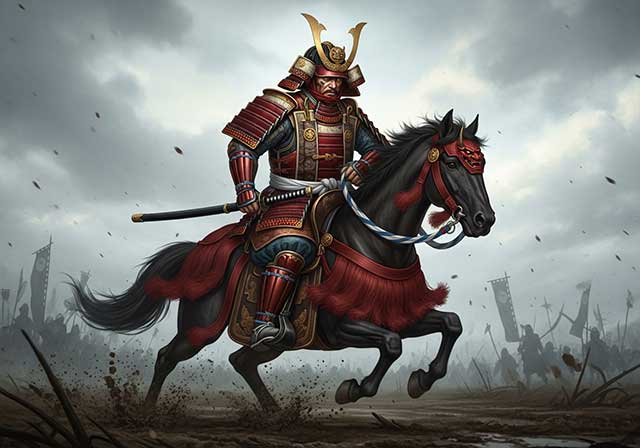
Taira no Masakado embodied the quintessential samurai of his era—self-assured, harsh, and unyielding. In his youth, he served in the palace guard and repeatedly proved his bravery while suppressing unrest. Thanks to these achievements, Masakado sought the post of chief of the capital’s military-police office (the kebiishi-chō), but he was rejected: by that time, nearly all court positions—now little more than privileged sinecures—were controlled by members of the powerful Fujiwara clan.

